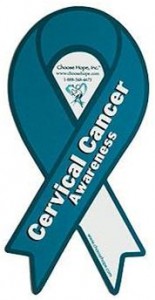- Receiving annual Pap tests
- Getting the HPV (human papilloma virus) test
- Obtaining the HPV vaccine
Almost all cervical cancers are caused by the human papilloma virus (HPV), a common virus spread through sexual intercourse. Some strains lead to cervical cancer, while others aren’t problematic at all.
The cancer usually develops slowly, starting as a precancerous condition called dysplasia. The condition is 100 percent treatable and can be detected through Pap tests. It can actually take years to turn into cervical cancer, which is why the cancer is often found in women who don’t schedule regular Pap exams or follow-up on abnormal exam results. Often, early cervical cancer has no symptoms, but they can appear over time.
Risks for cervical cancer include risky sexual behavior (having sex at an early age, with multiple partners or partners who participate in risky sexual activities), as well as poverty, weakened immune systems, lack of access to routine medical care and not getting the HPV vaccine. Women whose mothers took the drug DES (diethylstilbestrol) during pregnancy in the early 1960s to prevent miscarriage are also at a higher risk for cervical cancer.
About 12,000 women are diagnosed with cervical cancer in the U.S. every year, and more than 4,000 women die from the disease annually.
Women, don’t let yourself be one of them! Encourage all the women in your lives – your partners, wives, mothers, sisters, friends and daughters – to schedule annual gynecological exams, and get an HPV test and vaccine (when age-appropriate).
This is one cancer we can kick today!
-Jen Andruzzi


